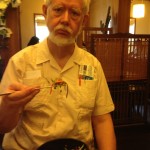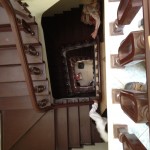To my stark amazement, I love Windows 8. Let me count the ways.
But first — why am I weighing in?
Because various tech experts, including two I know, are recommending we skip this latest version of Microsoft’s operating system. At least (the advice goes) we should hold off till we’re forced into it by the purchase of a new PC.
I couldn’t disagree more. My advice: If you’re buying a PC, and you have a choice between Windows 7 or 8 — go with 8.
 Here’s why: (a) Windows 8 is easy to master. (b) It’s substantially faster. (c) It’s much more secure and stable. (d) It automatically backs up all your stuff — your data files, your software, even the operating system itself. (e) It has a ton of useful new features and utilities. (f) It’s dirt-cheap.
Here’s why: (a) Windows 8 is easy to master. (b) It’s substantially faster. (c) It’s much more secure and stable. (d) It automatically backs up all your stuff — your data files, your software, even the operating system itself. (e) It has a ton of useful new features and utilities. (f) It’s dirt-cheap.
So true are these statements that even if you already own a Windows 7 machine, you should — in my opinion — download and install the Windows 8 Pro upgrade. Direct from Microsoft, this costs $40. Unless you purchased your Win7 system after June 2, 2012. Then it costs only $15!
Either price is a steal, but they’re good only till January 31. (In the past, Microsoft has made operating system upgrades prohibitively expensive for individuals, which is why we usually acquire them only as we replace machines.)
But what’s the debate about? Let’s turn to specifics:
How Windows 8 Works
Windows 8 is Microsoft’s latest attempt to embrace “tablet computing”. (Think iPads, Android slates, and smartphones). This requires a radical new look-and-feel. Microsoft’s “mission impossible” is to establish a tablet-oriented operating system (OS) that also works better than ever on traditional desktops.
The tablet side is the one we’ve all seen in the ads: a “start screen” covered with brightly colored “active tiles”. These new-style tiles lead, typically, to new-style apps optimized for tablet computers such as the new Microsoft Surface. On many models, that’s all you’ll have.
But for traditional laptop or non-mobile computers, the start screen is one click away from — your traditional Windows desktop! There you install and run all your familiar apps: Office, Photoshop, Skype, solitaire, whatever else you already do. The new Windows. Just like the old Windows.
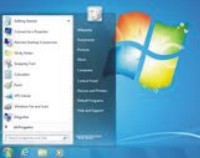 Except — hey, where’s my “start” menu? The one I used to find at the lower left, where I’d click “start” to turn my computer off? Or to list “all programs” so I could find the ones I installed but then lost? Or get to the control panel so I could do whatever one does with that?
Except — hey, where’s my “start” menu? The one I used to find at the lower left, where I’d click “start” to turn my computer off? Or to list “all programs” so I could find the ones I installed but then lost? Or get to the control panel so I could do whatever one does with that?
Turns out, the old start menu has morphed into the new start screen. Both are activated by the familiar Windows key. You can also conjure up the start screen by a variety of mouse clicks or (for touch devices) finger gestures.
It’s startling to see the old start menu replaced by a special screen that constitutes the entire user interface for the forthcoming crop of Windows tablets. Some call this duality “schizophrenic”. I find it brilliant. (Of course, brilliance and schizophrenia aren’t mutually exclusive.)
The Learning Curve
Critics of Windows 8 complain that its learning curve is “too steep”. Any minor improvements (they say) just aren’t worth the pain of unlearning and relearning.
What pain? I would suffer far, far greater pain sticking with Windows 7 or any earlier version. The so-called “learning curve” mostly involves features that didn’t exist before, and which we don’t have to use till we want them. We’re free to go on doing everything in the way we know, for as long as we like.
Your familiar desktop remains, and it works exactly as before. Your programs also work exactly as before. As noted above, the main “new” feature is that the “windows key” pops up a start screen in place of the old start menu.
But the old start menu was a convoluted, confusing mess. The beautiful new screen that replaces it is logical, natural, and intuitive. I started using it right away, without any instructions. The old “menu” is one I still struggle with, whenever I must go back to any computer running Win7 or earlier. (But do check this out for yourself; don’t take my word!)
I’ve also heard that familiar programs now work differently, and not as well. This hasn’t been my experience. Mine all work the same, except faster. That’s amazing, considering I’m still using some software I first installed under Windows 95. (For those who weren’t yet born, Windows 95 was the first “real” Windows, replacing the even older DOS command line. I was there.)
One program I’ve lost was my beloved MARS — Multiple Author Refer System — a search engine for Baha’i scripture. But that was already unworkable under Windows 7, hardly the fault of Win8.
The Speed Difference
Go to Google (or any search engine) and type in “Windows 8 speed comparison”. Scores of tech sites will pop up, reporting real-world benchmark testing. Their collective verdict is in: Windows 8 (out of the box) is faster than Windows 7 (out of the box) — even on identical hardware! For some functions, the speed differences are dramatic. Nor are they confined to obvious bottlenecks like booting up.
But out-of-the-box comparisons miss the larger story. A chronic Windows failure has been this: Over time, all versions of Windows have tended to run slower and slower, bogging down, becoming buggier and more clunky. This was true even when no new or extra demands were being placed on the operating system, and with no new software being installed. It was true no matter how many virus scans one ran, how many updates were installed, or whatnot.
This problem, though under-reported, is well-known: John Dvorak, the cranky PC Magazine columnist, calls it “operating system rot”. The causes are various. Sometimes the problem is malware (viruses, ad-bots, and other scum). Just as often, it’s the “critical security updates” Windows always is downloading and installing into itself. Plus every other program on your computer also is updating continuously. All the updates bloat your system and eventually break down into incompatibility.
Windows 8 is the first system whereby Microsoft acknowledges this problem (albeit tacitly) and does something about it. In addition to the old “system restore” function (now much improved), there is a “reset” function that returns Windows to its out-of-the box, factory-fresh condition. Better yet is a “refresh” feature that returns it to a like-new state without destroying your data files.
Finally (and best of all), you can install all your favorite apps, set up your system just the way you like it, and identify that state as your permanent target for refreshing. (Click here for an article on how to do this.)
Security
All earlier versions of Windows have been highly vulnerable to hacker attacks. Windows 8, by contrast, has anti-virus protection built in, and turned on by default if no other protective software is running.
Much more important, the core system elements have been totally redesigned to be as bullet-proof as possible. Is it perfectly invulnerable? No. But the experts agree that hackers will have a far, far harder time taking over your system than they had before. Witness this article by PC Magazine‘s security specialist, Neil Rubenking:
Windows 8: Secure at the Deepest Level
The article’s conclusion: “… any attack or exploit that worked against Windows 7 will fail against Windows 8.”
Elsewhere, Rubenking quotes “Black Hat” authorities who concede that Windows 8 can indeed be broken by a sufficiently trained and talented hacker. But they expect only one tenth of one percent of the current hacker community ever to attain such prowess — and most of those (they say) will end up working for Microsoft anyway!
Automatic Backup
We all hate doing backups. It’s a painful chore, and even those of us who do it, do it grudgingly. What a nuisance! But if we don’t, we lose valuable data files.
Windows 8 has a nifty feature called File History. You plug in an external disk (most likely one of those USB drives you see everywhere nowadays, that hold oceans of stuff), and Windows asks if you want to use it for File History. You say yes, and from then on, Windows uses that drive to keep copies of all your files. Or rather, all the ones in your “libraries” — and you can easily mark any of your folders as libraries.
But better yet is the “history” part: Windows automatically saves different versions of your files. So after you’ve screwed up your budding novel and now wish you’d kept those old chapters you rewrote, guess what: Windows has them! And will give them back to you with a mouse-click or two. Just think how many times that will save your bacon over the next few years.
Admittedly, File History isn’t yet as good as the Time Machine feature that Apple Mac enthusiasts love. But it’s good, and will only get better.
New Features
I mentioned Windows 8 has “a ton of useful new features”. Here’s just one:
If you have a CD or DVD, you can copy the whole thing to your hard disk as a single file (“disk image”). (It’s called an ISO file.) Once it’s on your disk, you can double-click it, and Windows treats that file as a “virtual drive” — assigning it a drive letter and running it as if it were a disk in a physical drive. Except that it runs it an awful lot faster: no spinning and whirring, no read-write errors. This is a terrific way to back up your priceless software disks, for example. You’ll think of many other uses.
Price
Did I mention that Windows 8 is dirt-cheap?
Some Closing Perspective
Anyone who, over the years, has heard me rant knows I am not a shill for Microsoft. I’ve long berated the company, griping that it had lost its way and betrayed its core constituency.
I built my first computer (the cult-classic “Sinclair”) with a soldering iron, from a pile of diodes and capacitors. Back then, the two Steves (Jobs and Wozniak) were cobbling together the Apple I in a garage. Bill Gates and Paul Allen were designing the BASIC programming language I came to love.
So I remember Microsoft back when it was an upstart start-up. It was the little guy, David taking on the corporate Goliaths on behalf of all us little guys. Between them, Apple and Microsoft brought vast computing power to the masses, power formerly reserved to large corporations. (Other companies, including Radio Shack, Texas Instruments, and Commodore, also played important roles and are under-credited.)
But Microsoft eventually became a mega-corporation itself, and started acting like one. One side effect is that Windows, when it arrived, never had the lean-and-hungry sleekness of Microsoft’s earliest software.
I kept hoping Windows would improve, but it seemed to get buggier, more bloated, more mediocre with each new version. Yet I kept using it (instead of, say, Macintosh) because it had the applications I most depended on.
Windows 8 is the first version of Windows about which I can be really enthusiastic. Don’t get me wrong: It’s far from perfect, but it’s a start.
And even if the only thing Windows 8 does is scare the living daylights out of Apple and Google, that will be a good thing. The fireworks will be fun to watch.
Have you upgraded to Windows 8? What is your experience? Please share by posting your thoughts in the comment section below.
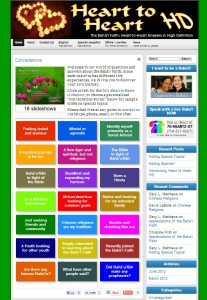 During the ensuing year, I’ve paid no attention to hits, visits, or other web-traffic statistics. But shortly after the site’s first birthday, I peeked — and was stunned to learn that it has evolved into one of the most-used, most-visited Baha’i sites on the Internet.
During the ensuing year, I’ve paid no attention to hits, visits, or other web-traffic statistics. But shortly after the site’s first birthday, I peeked — and was stunned to learn that it has evolved into one of the most-used, most-visited Baha’i sites on the Internet.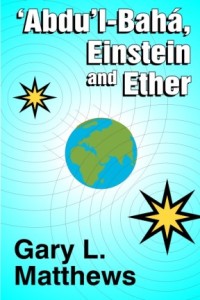






 It was May 8-9 when Zabine Van Ness and I returned to Seattle from Hanoi, via Seoul, Korea. (See the previous article,
It was May 8-9 when Zabine Van Ness and I returned to Seattle from Hanoi, via Seoul, Korea. (See the previous article, 










